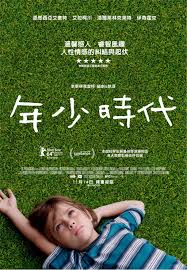Assisted Breeding Program Helps Australia's Ailing Great Barrier Reef
VOA News
December 30, 2017 8:53 AM (source)
Assisted Breeding Program Helps Australia's Ailing Great Barrier Reef
人工輔助復育計畫為病懨懨的(ailing)澳洲大堡礁帶來生機
December 30, 2017 8:53 AMPhil Mercer
SYDNEY —
There's new hope for ailing parts of Australia's Great Barrier Reef - assisted reproductive technology. Researchers have been capturing coral spawn and rearing millions of larvae in large tanks.
The reef is arguably Australia's greatest natural treasure. It stretches more than 2,300 kilometers down north-eastern Australia, and faces many threats, including climate change and pollution.
Professor Peter Harrison from Southern Cross University has been collecting the coral spawn off Heron Island on Australia's Great Barrier Reef. It is then placed into tanks, where it matures.
Millions of coral larvae are then placed back onto damaged areas of the reef that may not otherwise regenerate naturally. The larvae are put into large enclosures where their growth can be monitored. Early results are encouraging. It is estimated that 100 juvenile coral have survived, and are settling into their new home.
The mesh enclosures cover a hundred square meters of damaged coral, and the next challenge will be covering several kilometers of reef.
It is the first time the assisted breeding method has been used in Australia, and it follows a successful trial in the Philippines that rejuvenated reefs damaged by fishing.
Harrison says the trial on the Great Barrier Reef is going well.
"What we are doing is capturing some of that coral spawn, growing millions of larvae, and then putting those larvae back into areas of the reef that do not have many living corals on them at the moment to rapidly increase the rate at which coral recovery can occur. These are the first experiments using this larval restoration technique on the Great Barrier Reef. The work is still experimental at the moment but the results from these last experiments will help us understand how we can scale up to hectare-scale reef patches in future," Harrison said.
The Great Barrier Reef Marine Park is about the size of Japan and is so big [that] it can be seen from outer space. It is home to more than 3,000 types of mollusks and 1,600 species of fish.
It is not only an environmental treasure, but an economic one as well, generating billions of dollars in revenue and sustaining tens of thousands of jobs, mostly in the Australian tourism industry.
In the past two years, two-thirds of the Great Barrier Reef has been devastated by severe coral bleaching caused by warmer ocean temperatures, according to Australian scientists.
The Australian government is contributing more than 0,000 to help advance Harrison's reproductive research.
人工輔助繁殖技術(assisted reproductivetechnology)為澳洲(Australia)大堡礁(Great Barrier Reef)嚴重白化的珊瑚礁(reef)帶來一線生機。研究人員致力於蒐集珊瑚(coral)卵(spawn),在大型水缸中培育(rear)出數以百萬計的珊瑚幼蟲(larva)。
大堡礁的珊瑚礁群可說(arguably)是澳洲最珍貴的自然寶藏。這片珊瑚礁在澳洲東北部綿延(stretch)了 2300 多公里,目前面臨(face)氣候變遷(climate change)和汙染等各種威脅。
澳洲南十字星大學(Southern Cross University)教授彼得.哈里森(Peter Harrison)持續於大堡礁一帶的赫倫島(Heron Island)附近收集珊瑚卵,放入水缸裡,珊瑚卵就在其中孵化成長。
待珊瑚卵長成幼蟲後,數以百萬計的幼蟲會被放回遭受嚴重破壞的(damaged)珊瑚海域,這些海域的珊瑚礁往往無法以其他自然方式再生(regenerate)。研究人員在圈(圍)起的數個區域(enclosures)中放入珊瑚幼蟲,以便監測珊瑚的成長狀況。復育的初期結果令人振奮(encouraging):估計有 100 隻年幼的(juvenile)珊瑚蟲存活,在新家安頓(settle)下來。
這些以網架(mesh)圍起來的區域涵蓋了面積達 100 平方公尺的受損珊瑚礁,研究人員接下來的挑戰則是將涵蓋面積擴大至好幾公里長。
此人工輔助育種(breeding)方法首次用於澳洲,之前已試用於菲律賓,成功使原本因人類捕魚(fishing)而遭受破壞的珊瑚礁恢復往昔的朝氣蓬勃(rejuvenate)。
哈里森教授表示,目前在大堡礁的復育試驗進行得很順利。
「我們現在所做的,是把一些珊瑚卵收集起來並培養出數百萬隻珊瑚幼蟲,然後將幼蟲放回目前沒有很多珊瑚存活的珊瑚礁海域,藉此加快珊瑚復原(recovery)的速度。這是我們首次嘗試將這種幼蟲(larval)復育(restoration)技術運用於大堡礁。這樣的作法仍處於實驗階段,不過近期的實驗結果將幫助我們了解未來如何將珊瑚礁的復育區塊(patch)擴大(scale up)到公頃的規模(scale)。」哈里森如此說道。
大堡礁海洋公園(The Great Barrier Reef Marine Park)的大小相當於整個日本(Japan),也因為幅員遼闊,從外太空就可以看得到。目前有超過 3000 種的軟體動物(mollusk)和 1600 種的魚類棲息於此。
大堡礁不僅是自然環境上的寶藏,也可說是經濟上的寶藏──大堡礁為澳洲帶來數十億的收入,同時讓當地成千上萬的(tens of thousands of)工作機會得以維持(sustain),這些大部分為觀光旅遊業的工作。
澳洲的科學家表示,過去的兩年間, 因為海水溫度升高,珊瑚嚴重白化(bleaching),重創(devastate)大堡礁 2/3 的珊瑚礁。
(編按:珊瑚白化[coral bleaching]是珊瑚礁呈現的一種病理特徵。因全球暖化造成的海水溫度上升、海水鹽度改變或細菌感染等皆可能造成珊瑚白化。有關大堡礁珊瑚白化的詳細介紹,可參考英國廣播公司新聞[BBC News]提供的中英文報導:「澳大利亞大堡礁:珊瑚白化破壞 『 史無前例 』」,Great Barrier Reef suffered worst bleaching on record in 2016, report finds。)
澳洲政府已投入超過 31 萬(美元)的資金協助哈里森教授的復育研究。
Language Notes
ailing [`elɪŋ] (adj) 生病的,身體不舒服的;境況不佳的,處境困難的
* ail [el] (v)(使)生病,(使)不適;困擾,使處境困難
reef [rif] (n) 礁;暗礁;礁脈
reproductive [͵riprə`dʌktɪv] (a) 生殖的,生育的,繁殖的;再生的
* reproduce [͵riprə`djus] (v) 繁殖,生殖;再生產
coral [`kɔrəl] (n) 珊瑚,珊瑚蟲
* 本字也可作形容詞,意指「珊瑚紅色的,淺橘紅色的」
spawn [spɔn] (n)(魚、青蛙等的)卵
* 本字亦常作動詞,意即「產卵」
rear [rɪr] (v) 養育;飼養;培育
* 本字也常作形容詞,為「後部的;後面的;背部的」之意
larva [`lɑrvə] (n) 幼蟲;幼體
* 注意本字的複數形為 "larvae",音標為 [`lɑrvi]
* larval [`lɑrvəl] (a) 幼蟲的;幼體的
arguably [`argjuəblɪ] (adv) 可論證地;可以認為;大概,可能
enclosure [ɪn`kloʒɚ] (n) 圍起來的區域;圍場;圍地
* enclose [ɪn`kloz] (v) 把. . . . . .圍起來;圍住,包住
encouraging [ɪn`kɝɪʤɪŋ] (a) 令人鼓舞的;振奮人心的
juvenile [`ʤuvənaɪl] (a) 少年的;適合少年的;幼稚的
mesh [mɛʃ] (n)(用金屬絲、塑膠或線織成的)網;網狀物
breeding [`bridɪŋ] (n)(動物的)繁殖,飼養;(植物的)培植
* breed [brid] (v)(為育種目的)飼養;(動物)產(子)、孵(卵)
rejuvenate [rɪ`ʤuvənet] (v) 使年輕;使恢復活力;使青春煥發
* 本字是由字首 "re-"「再一次」、字根 "juvenis"「年輕的」和動詞字尾 "-ate" 三部分組合而成
restoration [rɛstə`reʃən] (n) 修復;復原;整修;重建
* restore [rɪ`stor] (v) 使恢復;使復原
patch [pæʧ] (n) 區塊
* 本字亦常指「(衣褲上的)補釘,補片」或是「(護傷用的)膏藥,貼布」
mollusk [`mɑləsk] (n) 軟體動物
* 注意本字另有字尾為 "c" 的拼法,即 "mollusc",此多見於英式拼法
sustain [sə`sten] (v) 保持,維持,使持續,使繼續
devastate [`dɛvəstet] (v) 摧毀;毀滅;蹂躪
* 本字除了用於形容對事物的摧毀外,亦可用於形容對個人情感上的負面影響,使其「極為震驚 、煩亂」,常以被動的形式表示,例如:He was totally devastated by the news of his grandmother's death.(祖母過世的消息令他十分震驚、心煩意亂。)
bleach [bliʧ] (v) 漂白;使褪色;使色彩變淡
* 本字也可作名詞,指「漂白劑」
* coral bleaching (n phr) 珊瑚白化
Check your vocabulary!
Fill in the blanks with a word or phrase from the list above. Make necessary changes. After you finish, highlight the blanks to reveal the hidden answers.
1. Ultimately, how much of the marshland do you think will be rejuvenated or restored?
2. Free-swimming larvae of land crabs eat plankton in the ocean.
3. By changing their individual environments, patients may be more successful in sustaining their weight management behaviors.
4. This would provide a breeding area for fish and other marine life, enhancing the biological and economic productivity of the sea.
5. His family said they had no idea why anyone would want to kidnap him and had expressed concern about his ailing health.
6. It's encouraging to hear that the government is finally listening to us.
7. The town was devastated by a hurricane in 1928.
8. It was a windy night, but the bowl-shaped rock formation around the area made a useful enclosure that kept the weather out.
9. The museum's collection of works by Soutine is now arguably the best in Paris.
10. Certainly juvenile animals are a common prey of large carnivores today, and it is no surprise that similar patterns should have played out in the past.
編譯:黃筠婷
|

 Read more on VOA.
Read more on VOA.







